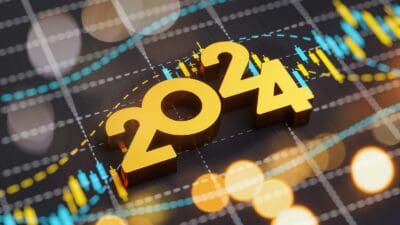Barclays (LSE:BARC) shares are among the cheapest on the FTSE 100. The firm current trades at just 4.5 times earnings. Normally, a price-to-earnings ratio like this would suggest something is wrong. So, let’s take a closer look at this banking giant and explore whether investors should be snapping it up as the share price nadirs.
One year on
If I had invested in Barclays a year ago, my returns wouldn’t be great. In fact, I’d be down 17%. So if I’d invested £1,000, today I’d have £830 plus around £40 in dividends.
Interestingly, the share price had pushed upwards during the year and peaked around 190p in February before the recent Silicon Valley Bank fiasco. The situation was largely exacerbated by the implosion of Credit Suisse and its takeover by UBS.
The stock has actually fallen 18% over the past month. It’s one of the biggest UK casualties from the SVB crisis.
Bond losses
Concerns largely centre around unrealised bond losses. Because as central bank interest rates rise, the value of bonds — with lower yields, already owned by the banks — fall. That’s because bond prices and bond yields are inversely related.
Like SVB, European banks also hold large bond portfolios. And, as we know, the paper value of these bonds has dropped due to a year of successive rate rises.
However, the big difference with European banks is that, compared to SVB, a far smaller proportion of these are designated as “available for sale” on their books. Instead, most are being held to maturity and their values don’t have to be adjusted.
Naturally, the higher BoE and Fed rates go and the longer they remain there for, the more challenging the situation could become.
Should we worry about Barclays?
With the above in mind, I believe the share price correction is overdone. Risks remain, but it’s worth noting that Barclays is a fairly average bank with regards to leverage, core tier one equity, and liquidity.
Analysts at ABN Amro note that on average European banks have around 6% of assets invested in “available for sale” portfolios. By comparison, SVB had around 14% in “available for sale” portfolios.
The differences don’t stop there. Investments make up 18% of European banks’ total balance sheets. Meanwhile, at SVB, investments as a share of assets were 57%.
It’s also worth noting that European banks are stressed tested where unrealised losses arising from bond valuation changes are taken into account in capital requirement calculations. However, in the US, this requirement was rolled back under Donald Trump’s leadership. SVB was exempt from such stress testing.
It’s a buy for me
For me, banks remain a highly attractive investment proposition. Barclays is one of my top picks, with DCF calculations suggesting it could be undervalued by as much as 76%. That’s why I’m continuing to add to my position in the stock.








